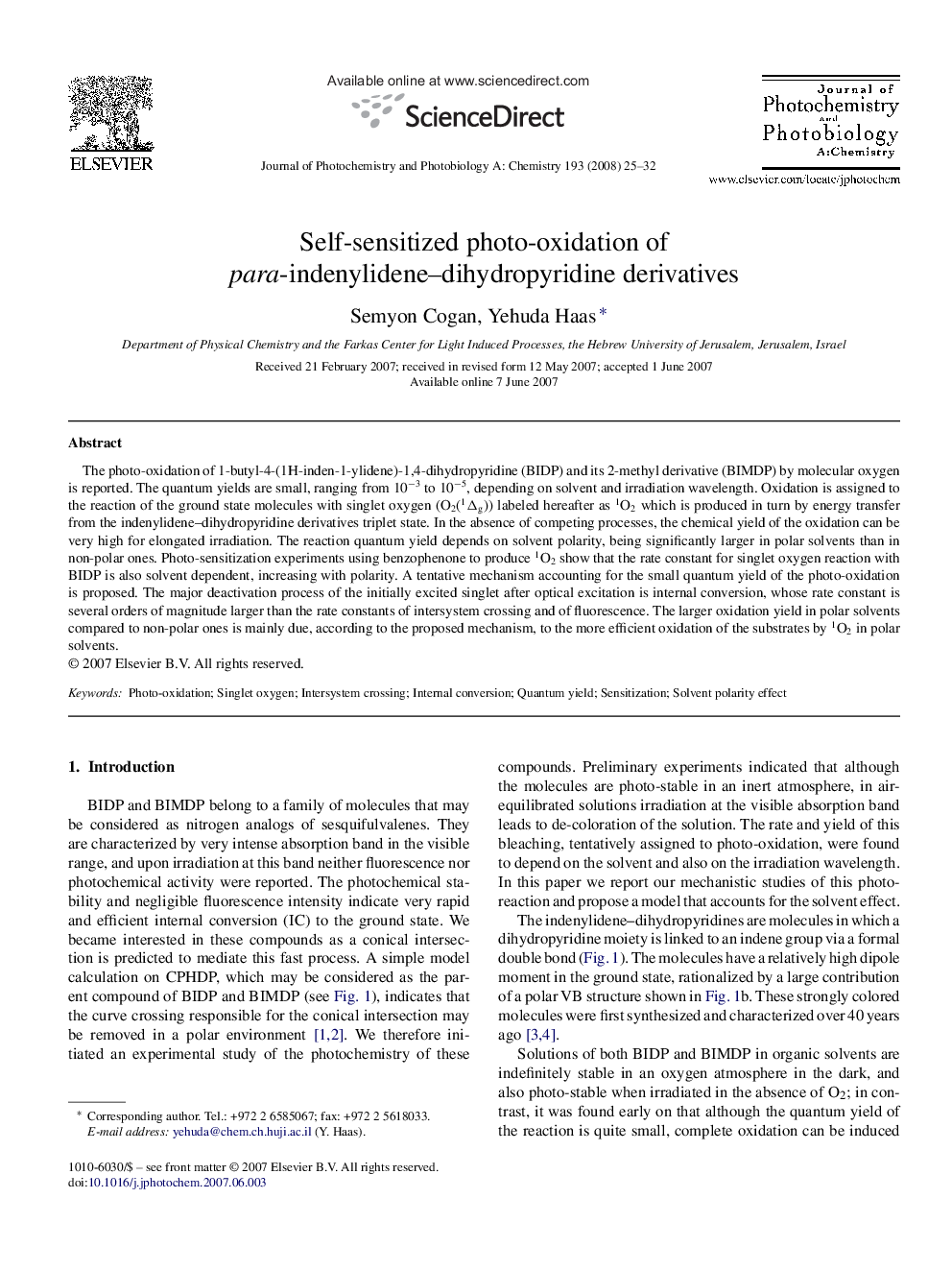| Article ID | Journal | Published Year | Pages | File Type |
|---|---|---|---|---|
| 29226 | Journal of Photochemistry and Photobiology A: Chemistry | 2008 | 8 Pages |
The photo-oxidation of 1-butyl-4-(1H-inden-1-ylidene)-1,4-dihydropyridine (BIDP) and its 2-methyl derivative (BIMDP) by molecular oxygen is reported. The quantum yields are small, ranging from 10−3 to 10−5, depending on solvent and irradiation wavelength. Oxidation is assigned to the reaction of the ground state molecules with singlet oxygen (O2(1Δg)) labeled hereafter as 1O2 which is produced in turn by energy transfer from the indenylidene–dihydropyridine derivatives triplet state. In the absence of competing processes, the chemical yield of the oxidation can be very high for elongated irradiation. The reaction quantum yield depends on solvent polarity, being significantly larger in polar solvents than in non-polar ones. Photo-sensitization experiments using benzophenone to produce 1O2 show that the rate constant for singlet oxygen reaction with BIDP is also solvent dependent, increasing with polarity. A tentative mechanism accounting for the small quantum yield of the photo-oxidation is proposed. The major deactivation process of the initially excited singlet after optical excitation is internal conversion, whose rate constant is several orders of magnitude larger than the rate constants of intersystem crossing and of fluorescence. The larger oxidation yield in polar solvents compared to non-polar ones is mainly due, according to the proposed mechanism, to the more efficient oxidation of the substrates by 1O2 in polar solvents.
